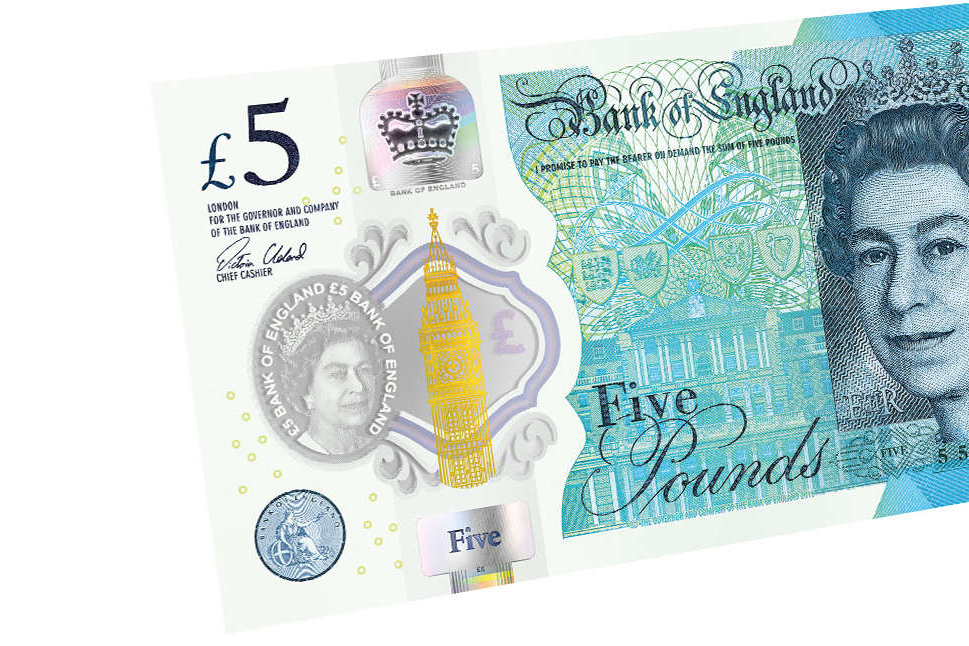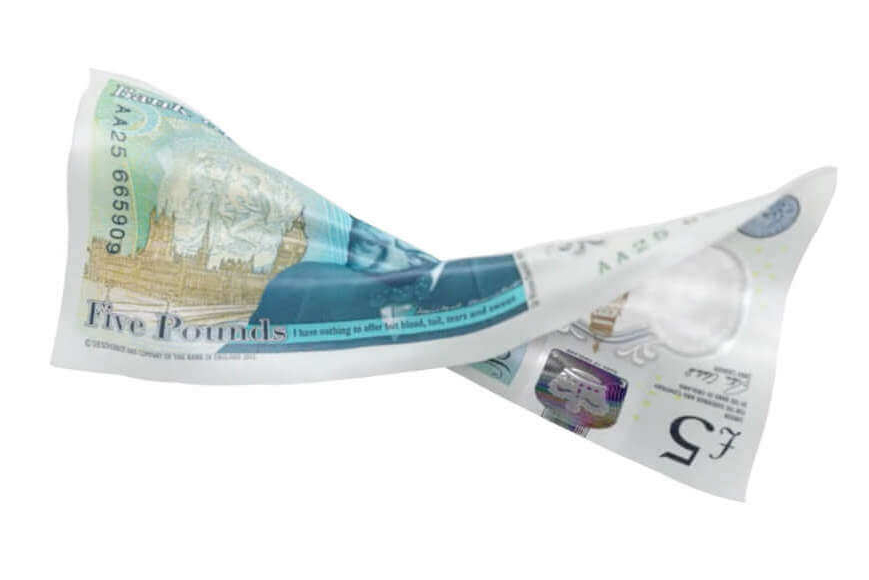And if you do go, you’ll likely have a chance to fondle the new “plastic” fiver, released by the Bank of England on Tuesday.
Featuring an image of Queen Elizabeth II on one side and Britain’s World War II leader Winston Churchill on the other, the new fiver is the Bank’s first-ever bill made from polymer, a thin and flexible plastic material.
The more robust structure makes it extremely resistant to dirt and moisture, and should ensure it lasts around 2.5 times longer – about five years in all – than the old paper fiver. The material has also given the Bank the chance to introduce a bunch of new security features, which should help keep counterfeiters at bay.
The security measures, which can be viewed in detail via the Bank of England’s iOS and Android app, include raised print, a see-through window with a foil Elizabeth Tower (pictured) that’s gold on the front of the bill and silver on the back, and a 3D image of the coronation crown that produces a rainbow effect when the bill is tilted. Also, shining a UV light on the new money shows up a bright red and green number “5” while the rest of the bill remains dull in contrast.
Around 440 million new fivers have been printed, all of which will go into circulation in the coming days and weeks. The Bank is also introducing its first polymer £10 next summer, followed by a polymer £20 bill by 2020.
Bank of England governor Mark Carney assured Brits – and overseas tourists – the new polymer fiver is able to withstand “a splash of claret, a flick of cigar ash, the nip of a bulldog, and even a spin in the washing machine.”
Judging by a torture test carried out by the BBC on Tuesday, it can also survive a cycle in the dishwasher:
They say we can wash it, we put it to the test with 5 Live’s .@seanfarrington… #moneylaundering #TheNewFiver pic.twitter.com/0cQMev56zR
— BBC Radio 5 live (@bbc5live) September 13, 2016




